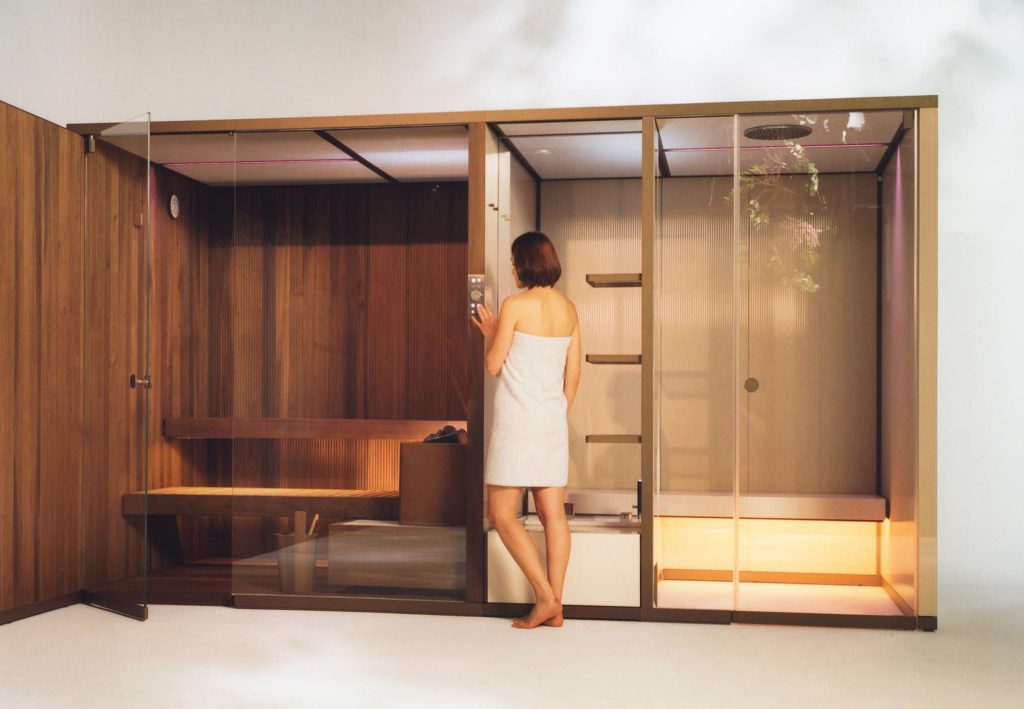
Enjoying a sauna or Turkish bath is not just a great way to relax, it is a ritual that has been an intrinsic part of many cultures for centuries. Nowadays these two practices can be found in spas and the homes of those seeking harmony between mind and body. But what is the real difference between a sauna and a Turkish bath and which is the right one for you?
The sauna is more than just a heated room: it is a ritual that originated in Finland and is still popular among those seeking harmony and wellness in their lives. Its journey through the years, with its traditions and proven benefits, is well worth further discussion, from its ancient origins to the positive impact it has on mind and body
Saunas are traditionally made of wood and designed to produce intense, dry heat. Inside the temperature can reach 85-100°C, while humidity is a lot lower (20-30%).
This dry atmosphere stimulates deep, natural sweating which, in turn, helps cleanse the body, relaxes the muscles and promotes an overall feeling of regeneration.
The heart of the sauna is the electric heater, called kiuas in Finnish, which warms stones that retain and spread the heat evenly throughout the space, creating an authentic, enriching experience.
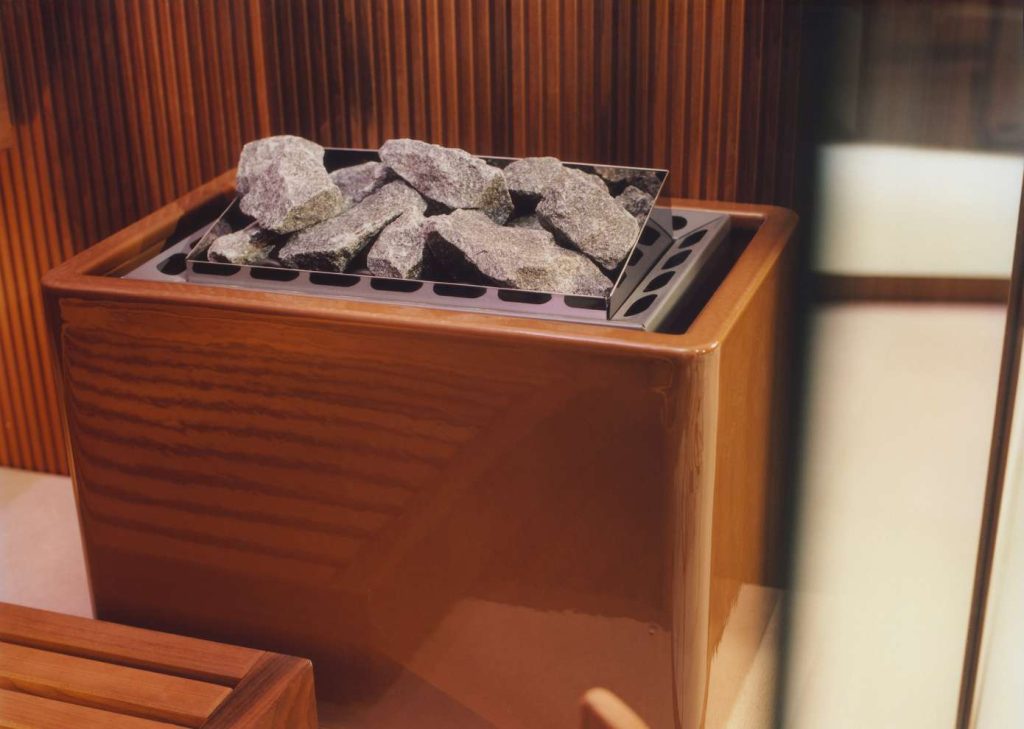
The history of the sauna spans more than two thousand years. It began in Finland as a hot bath dug into the earth, where red-hot stones released heat and steam. It was used for washing, as well as purification and socialisation.
The underground pits later evolved into wooden huts heated by wood-burning stoves, closer to saunas as we know them today. The practice quickly became part of the everyday lives and culture of Nordic people, a way for the mind and body to connect and for them to socialise.
Its popularity spread throughout the Baltic states and other parts of northern Europe, later arriving here, celebrated as a symbol of universal wellness. Today the benefits of the sauna are acknowledged throughout the world, but it still retains its original identity as a place offering heat, silence and regeneration.
The Finnish sauna is thought to be one of the most effective and complete wellness rituals. The intense heat naturally dilates the blood vessels, increasing blood flow and oxygenation of the body’s tissues, with positive effects on cardiovascular health too. Alternating a sauna with a cold shower stimulates circulation and strengthens our immune system, activating a mechanism similar to a “natural fever” which boosts the immune system.
The dry heat induces deep sweating, which helps flush out toxins and impurities for skin that looks healthier, more radiant and supple. Improved blood circulation also stimulates the production of collagen, which has a beneficial effect on fatty areas and skin elasticity.
As well as enhancing our appearance, a sauna promotes deep mental relaxation: the hot atmosphere stimulates the release of endorphins and lowers cortisol levels, relieving stress, anxiety and insomnia. Sports lovers also find it beneficial for muscle recovery, as oxygen and nutrients are carried to tissues more efficiently.
Several studies associate regular use of the sauna with a reduced risk of cardiovascular disease, as it can lower blood pressure and help us control our stress levels.
If you’d like to know more, read Effe’s articles on the benefits of a sauna and its practical guide on how to take a sauna.

Heat is generated by a heater, called kiuas in Finnish, which warms stones that retain and spread it evenly throughout the space. The most common heaters are electric and you can pour a little water over the stones to produce the characteristic steam (löyly) and heighten the feeling of warmth.
In the past, the stones were heated by fire but this tradition, while preserving a certain charm, is not so common nowadays. You can also find infrared saunas, with panels that convey heat directly to the body - an experience that is both different but equally as effective.
Check out the different sauna models and design solutions in the dedicated section of the Effe website: all the saunas.
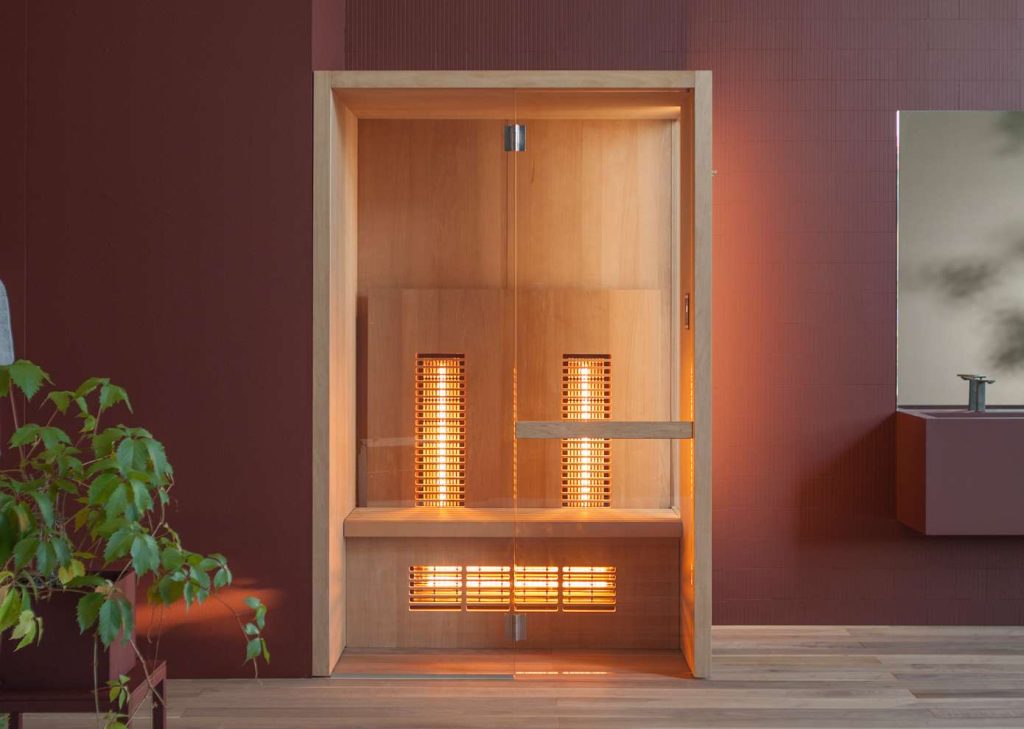
A Turkish bath, or Hammam, is an ancient ritual using humid heat and steam that originated in the Middle East. Unlike the Finnish sauna, which uses dry heat at high temperatures (85-100 °C), a Hammam works at lower temperatures (35-48 °C) but with very high humidity, sometimes reaching 100%.
The steamy atmosphere cleanses the skin deep down and opens the pores, it helps clear the airways and offers a gentler relaxing experience than the sauna. Check out Effe’s Hammam solutions in the dedicated section of the Effe website.

The Turkish bath traces its roots back to Roman thermae and Greek baths, perpetuating the tradition of beneficial heat treatments. It later evolved in the Arabic and Islamic world into the Hammam, a place not purely for washing, but for cleansing, social interaction and spirituality. Over the centuries, its washing rituals, massages and warm, therapeutic atmosphere have continued to define its very essence.
Turkish baths offer a wide variety of benefits and uplifting experiences:
If you want to learn the best way to enjoy a Hammam and all its regenerating effects, check out Effe’s practical guide to using a Hammam.

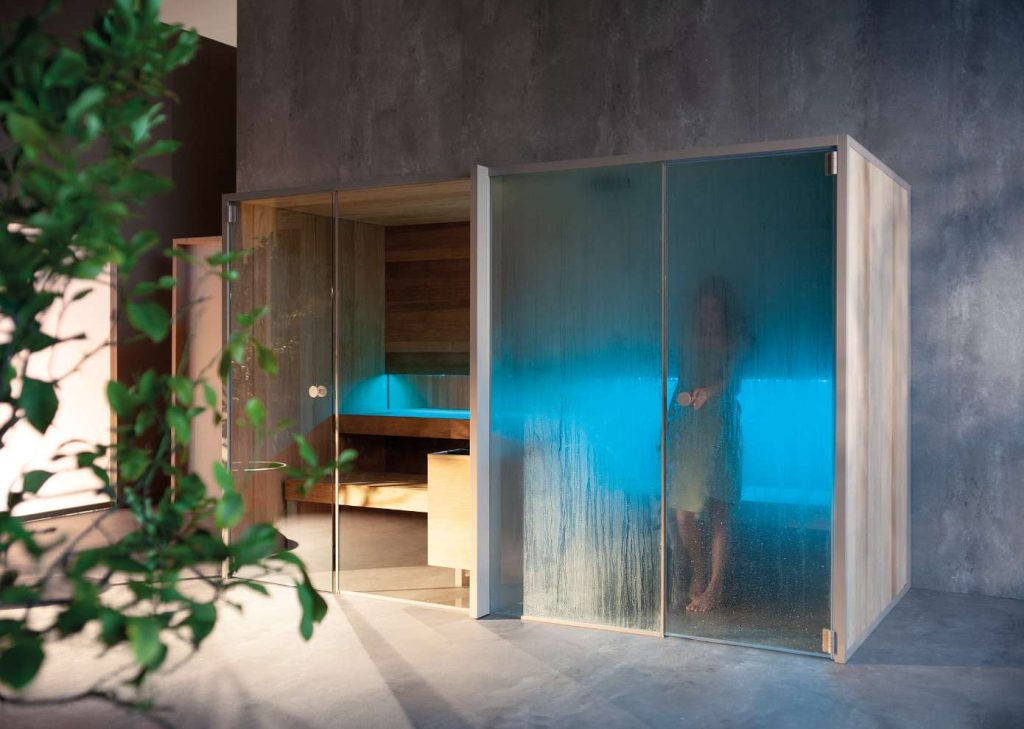
The difference between a sauna and a Turkish bath is all in the atmosphere. The temperature in a sauna is high (85-100 °C), while the humidity is very low (20-30%) and this creates dry heat which stimulates heavy sweating. This, in turn, helps flush out toxins, relax muscles and boost blood circulation.
A Turkish bath, on the other hand, works at lower temperatures (35-48 °C) but has very high humidity (90-100%). The dense steam envelops the body, hydrates the skin deep down and clears the airways, for a gentler, more uplifting experience.
Saunas and Turkish baths are made of different materials. A sauna is built mainly of wood (such as spruce or aspen) which withstands the dry heat and is still pleasant to the touch when temperatures are high.
A Turkish bath, on the other hand, requires materials that are resistant to water and humidity, such as marble, mosaics, ceramic tiles or stone. These surfaces do not absorb the steam and are easy to clean. A steam generator is installed to produce dense, healthy steam that is evenly distributed throughout the space. Effe has a wide range of high-tech internal and external generators which are designed to fit into the smallest of spaces, like your shower at home.
The way we relax in a sauna or Turkish bath varies from person to person, as the experience can be intense and reactions very personal.
In a sauna, the dry heat quickly triggers heavy sweating, as well as a feeling of intense heat. Sessions lasting 10-15 minutes are recommended, alternated with cold showers.
In a Turkish bath, the humid heat has a gentler effect, sweating is more gradual and you experience a feeling of being cocooned. You can stay in for longer (20-30 minutes at the most) and the heat experience is gentler.
Both saunas and Turkish baths offer multiple benefits:
Neither the sauna nor the Hammam should be used by people suffering from serious cardiac problems, very low or high blood pressure, respiratory failure, skin infections or if pregnant (without consulting a doctor). They are not recommended either if you are running a fever or have epilepsy or severe circulatory disorders.
Excessive use can cause dehydration or a drop in blood pressure, so you must always listen to your body and, if you’re not sure, consult your doctor before using either the sauna or the Turkish bath.
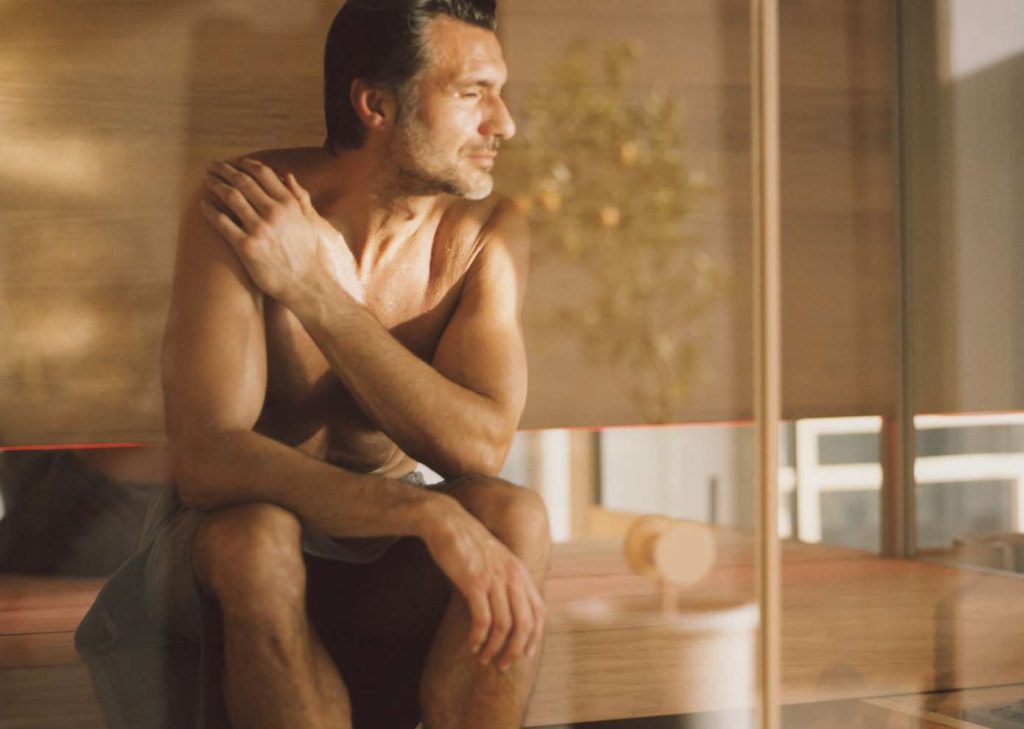
Whether you choose a sauna or a Turkish bath depends on your personal preference and what you want from the experience. If you enjoy intense, dry heat, which is ideal for relaxing muscles and helping your body recover after exercising, you should choose the sauna.
If, on the other hand, you prefer a more humid and enveloping atmosphere, a deep skin cleansing experience or relief from congestion, a Turkish bath is a better option. If you suffer from low blood pressure, the Hammam is often a better choice because of its lower temperatures.
Our bodies, however, all react differently: the best way to find out which is more suitable for you is to try both and see what happens.
There’s no definitive answer to this question because it depends on your own individual needs. The difference between a sauna and a Turkish bath lies in the approach: the first is more intense and immediate, the second more gentle and gradual. Both can enhance our health and daily wellbeing if practised regularly and mindfully.
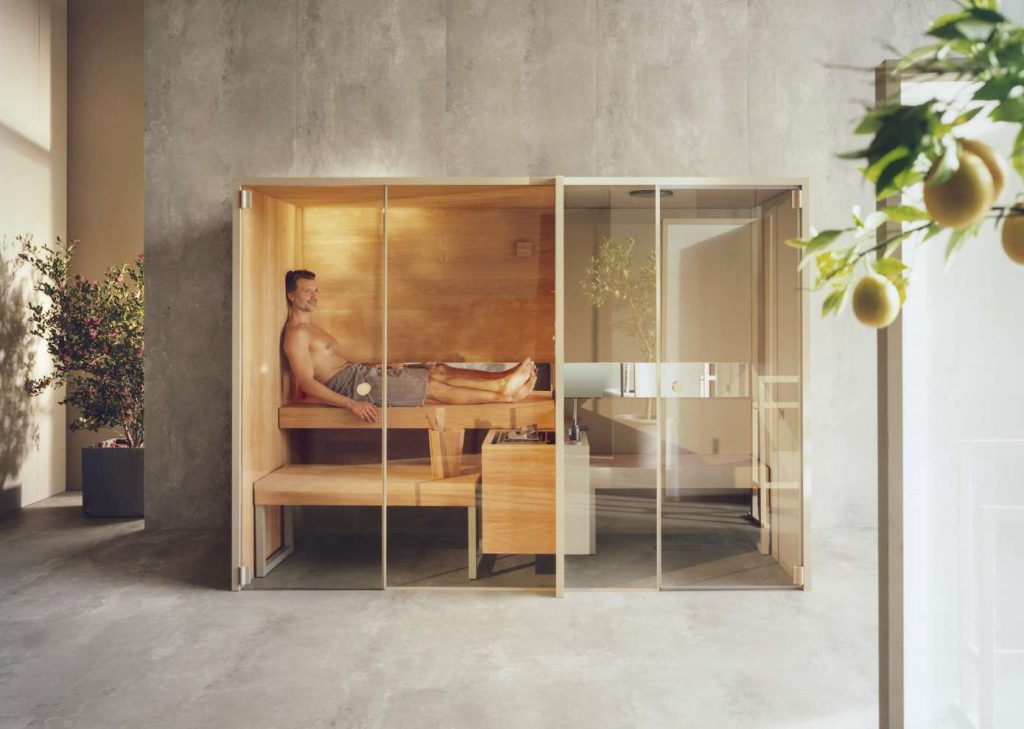
Combining a sauna and a Turkish bath in the same cabin just isn’t possible, because they both require different materials and equipment. There are, however, coordinated solutions that bring the two experiences together in a single space, giving you the freedom to choose the ritual that best suits your mood.
Effe’s collections, including Logica Plus, Yoku, BodyLove and Natural, are designed to allow you to move easily from the sauna to the Hammam. These contemporary, space-saving systems ensure functionality and comfort and provide the benefits of both treatments: they flush out toxins, relax muscles, cleanse the skin and improve breathing. All in a single, coordinated, high-tech product.
Knowing the difference between a sauna and a Turkish bath is the first step to enjoying a responsible wellness experience. Everyone has their own individual needs as regards their health, comfort and lifestyle. So it’s important to choose an experienced wellness partner who can meet them: Effe designs custom spas, assisting its clients every step of the way with advice, personalisation, technical assistance and attention to detail.